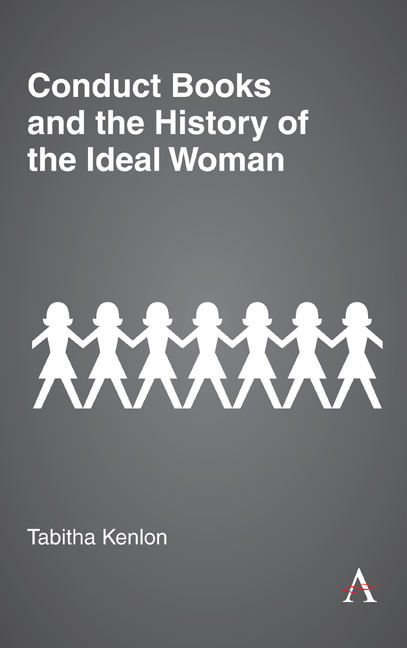Book contents
- Frontmatter
- Contents
- Acknowledgments
- Explanatory Note
- Introduction: Woman as She Should Be
- 1 A Good Woman Is a Godly Woman, Obviously
- 2 Conduct for Those Who Are Not Queen
- 3 Look but Don’t Talk: Reflections of the Ideal
- 4 Playing the Part as Nature Intended
- 5 Victoria’s Angels
- 6 Suffrage, Little Wives and Career Girls
- 7 Feminism Changes Everything, Right? Right??
- Coda: An Ideal End
- References
- Index
7 - Feminism Changes Everything, Right? Right??
Published online by Cambridge University Press: 30 April 2020
- Frontmatter
- Contents
- Acknowledgments
- Explanatory Note
- Introduction: Woman as She Should Be
- 1 A Good Woman Is a Godly Woman, Obviously
- 2 Conduct for Those Who Are Not Queen
- 3 Look but Don’t Talk: Reflections of the Ideal
- 4 Playing the Part as Nature Intended
- 5 Victoria’s Angels
- 6 Suffrage, Little Wives and Career Girls
- 7 Feminism Changes Everything, Right? Right??
- Coda: An Ideal End
- References
- Index
Summary
I'm Not a Feminist, but …
Conduct manuals published at the beginning of the sixteenth century do not substantively differ from those written one hundred years later, but the changes from the early- and mid- 1900s to the later decades of the twentieth century are remarkable. In many ways, though, the same battles continued. Arguments about women's roles in this period typically center on marriage and work; the discussion of jobs for women, which seemed to lose ground to the post- World War I New Feminism's focus on motherhood, resurfaced after World War II and again in the 1960s and beyond. The debate was multifa-ceted and involved discussions of ideal behavior and ideal place. For centuries conduct manuals had repeated with little widespread resistance that women ought to stay at home and fulfill their destinies as wives and mothers. Even though large numbers of women were working in the twentieth century, and many did so while married and raising children, they were encouraged to not work outside the home unless economically necessary. Suffragists’ character¬ization of work as an opportunity for personal growth, self- development and independence seems to have been forgotten by mid- century.
But then came the 1960s and the second wave of feminism. Betty Friedan exposed the reality of middle- class suburban American housewives with The Feminine Mystique in 1963, which sold more than a million copies in America and the UK by 1970.1 In England, Hannah Govron's The Captive Wife (1966) focused “on the intolerable fate of married working- class women, imprisoned in their homes and lacking occupation, companionship, and support.” These and other texts, such as Germaine Greer's The Female Eunuch (1970), helped reignite efforts for equality, or women's liberation, many of which were directly aligned with leftist political theories, such as civil rights and pacifism. Protesters disrupted the 1968 Miss America pageant, and there were marches and demonstrations across North America and Western Europe throughout the decade. Women formed political groups, created magazines and, in general, made their voices heard.
Yet as with any kind of social change, the path was neither clear nor smooth. If one group is seen as gaining rights, and thus power, the existing powerful group feels threatened. There was, then, resistance to this fresh batch of feminists, just as their ancestors had experienced.
- Type
- Chapter
- Information
- Conduct Books and the History of the Ideal Woman , pp. 159 - 184Publisher: Anthem PressPrint publication year: 2020



